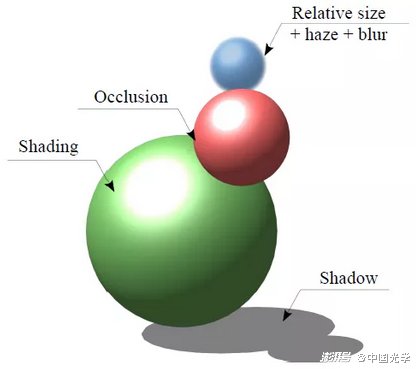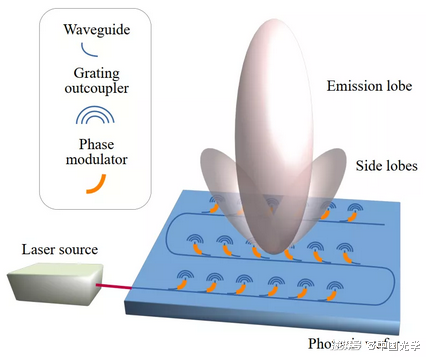Holography: The Future of 3D Display
Written by | Yan Yue (Ph.D., Chinese University of Hong Kong)
Physicist Dennis Gabor was arrested for inventingHolographyHe was awarded the 1971 Nobel Prize in Physics.Holography is a technology that can record the wavefront (including its amplitude and phase) and reconstruct it. It mainly uses the diffraction of light to produce virtual three-dimensional images.
Pioneers have long predicted that holography is the ultimate way to achieve perfect 3D display, because holography is the only way to meet the optical requirements of human visual system. For many years, researchers have been working hard to achieve this goal.
Recently, fromUniversity of Arizona School of Optical Sciences, USAofPierre-Alexandre BlancheProfessor in the latest issue ofLight: Advanced ManufacturingPublish an article entitled ""Holography, and the future of 3D display"ofSummary article.
First of all, it explains why it is an arduous challenge to realize holographic 3D display at present.
Then, starting from the human visual system, the mainstream 3D display technology and its characteristics are introduced.
Then, focusing on holographic 3D display, the new progress of real-time holographic computing using machine learning and neural network algorithm is summarized.
Then, the holographic data transmission model and data compression algorithm are discussed.
Finally, the hardware generation method of holographic data and its progress are introduced.
1. Why is holographic 3D display a formidable challenge?
In order to describe the difficulty of holographic 3D display intuitively, the author usesData transmission rate (bit rate, b/s)As a measure.
Assuming that a holographic color display with 45 visual field, 60Hz refresh rate, 8-bit resolution and screen size of 50cm×50cm is realized, the required bit rate is about 3× 10b/s when the light source is 500nm.
Figure 1 shows the comparison of data rates (in chronological order of development) required by holography and other communication technologies.
The rocker signal in 1798 can transmit about 2~3 symbols per minute, about 0.4 bit/s.
In the 1840s, telegrams transmitted in Morse code became popular, about 100 b/s.
In 1876, the appearance of telephone began to transmit sound signals, and the transmission rate was 64 KB/s.
Black-and-white TV, which appeared in the 1940s, can display 29.97 frames /s video with a transmission rate of 26 MB/s..
The transmission rate of color TV, which appeared in 1950s, has tripled to 78mb/s..
Digital video began to appear in 1990s, and the required rate of HDTV 720p reached 1.33 GB/s..
In the 2010s, the transmission rate of 4K HDTV 2160p was 12.7 GB/s..
The latest 8K HD requires 47.8Gb/s transmission. (Note: the above required transmission rate is the amount of data before compression) And the bit rate of holographic 3D color display is 60,000 times that of 8K HD, so the difficulty of realizing holographic 3D display is obvious.

Figure 1: The Road to Holography: Over time, the bit rate required by different communication systems.
According to the prediction of the development time axis in Figure 1, it will be about to realize the commercial holographic 3D display.In 2100.
The development trajectory may not be unchangeable, and all this depends on the continuous efforts of human beings. Although it is very difficult to realize, holography is still considered as the ultimate technology to realize 3D display. This is because holography is the only method that can meet the optical requirements of human visual system at present.
Second, human vision and 3D display
Understanding how the human visual system perceives 3D information is very important for developing 3D display.
The human visual system perceives depth from a large number of information obtained from the outside, and most of the important depth perception elements are two-dimensional information, includingShading+shadowing, perspective, relative size, occlusion and ambiguity..
Figure 2 below shows three balls on a two-dimensional plane, but it contains the two-dimensional depth perception elements listed above. After these two-dimensional depth perception elements pass through the human visual system, we will think that they are balls in three-dimensional space. Therefore, whether it is painting, photo or image, as long as the above two-dimensional depth perception elements are implanted, our human eyes will have a three-dimensional perception effect, otherwise the optical image illusion will occur. Therefore, the 3D display system needs to ensure the above two-dimensional depth perception factors first, and then add and solve other three-dimensional perception factors, such as stereoscopic parallax, motion inspection and visual convergence conflict (VAC) and so on.

Figure 2: Two-dimensional depth perception elements and their influence on depth perception
Based on the above information, the author discusses several main 3D display technologies and their characteristics:
1. Based on Stereo disparity:It is common in 3D cinemas now, and needs to wear 3D glasses, and there is a VAC.
2. Autostereoscopy 3D display:Commonly used lens array to realize three-dimensional imaging of light field; Users need to be fixed in a specific location, and there is a VAC.
3. Based on Motion Parallax (Multiview):It is equivalent to the user’s movable naked-eye 3D, with VAC, and the required bit rate is low, about 10 GB/s, which is also the focus of current research.
4. volumetric displays:Light is emitted, scattered and illuminated through a predefined three-dimensional space to display a three-dimensional image. Images are suspended in the air, giving people a great visual impact. However, there is occlusion problem and the imaging volume is limited.
These 3D display technologies have their own advantages and disadvantages and their applicable application scenarios, and many of them are limited by the human visual system and cannot be solved. However, these technologies will continue to move forward in the direction of more comfortable and better display effect for users before the final holography matures.
Third, holographic 3D display
Holography has been proved to be the only 3D display technology that can meet all the requirements of human visual system. But its challenge is enormous, mainly from three aspects:
1. Holographic 3D information computation.
The appearance of Computed Generated Holograms, CGH) has greatly promoted the development of holographic computing. The arbitrary image generate by that phase plate at a specific diffraction distance is calculated by use Kirchhoff and Feinier diffraction theory. But 10¹⁵The data bit rate requirement of b/s level (720p video) makes the calculation huge and time-consuming. This requires a more concise holographic computing algorithm, and the corresponding specific hardware platform for holographic computing is also very necessary.
2. Holographic information transmission (transmission)
Because of the huge data transmission demand, it is very important to establish an effective data transmission network model and a distortion-free diffraction data compression algorithm.
3. Holographic information alternation generation (reproduction)
In order to generate high-quality holographic graphics, taking the bit rate of 3× 10b/s as an example, it takes about 230,000 4K spatial light modulators (SLM) and 15,000 computers to process the corresponding data. These absurd numbers once again show the difficulty of realizing holographic 3D display. Holographic data generation devices and methods can generally be divided into the following categories:
I. liquid crystal on silicon (LCoS SLM):The resolution is high, but the refresh rate of liquid crystal is low.
Ii. microelectromechanical systems (MEMS):Fast refresh rate and high integration, but the current device efficiency is low. Texas Instruments is in the leading position, and its next-generation high-efficiency phase modulator is also being developed.
Iii. developing holographic materials that can be refreshed in real time;Such as photorefractive polymers and acousto-optic materials.
Iv. phase array photonic integrated chip:Micro-nano scale phase array is composed of a series of optical waveguides and realizes large-scale integration of wafer size. As shown in fig. 3, these phase arrays change their phases through on-chip acousto-optic or thermo-optic modulators, and are coupled out by gratings. Its advantages are high speed, easy phase control and large-scale integration on chip. The disadvantage is that the phase resolution is low, which leads to a large diffraction sidelobe.

Figure 3: Large Scale Integrated Phase Array
At present, no technology can meet the requirements of high resolution, high data generation and high integration at the same time.
Holography is still considered as the final technology to realize ideal 3D display. Although there is no mature and perfect solution at present, it cannot hide the great contribution people have made to it. Scientists are turning this technology into reality as never before.
Thesis information
Blanche. Light: Advanced Manufacturing (2021)2:28
https://doi.org/10.37188/lam.2021.028
Reprinted | Advanced Manufacturing WeChat official account
Editor of this article | Zhao Yang
Welcome the submission of the research group-press release
Reprinted/cooperated/contributed by the research group, WeChat:447882024
Take you to read a paper every day!Join >Light reading club